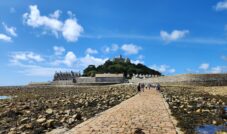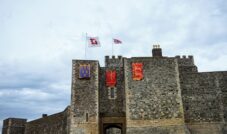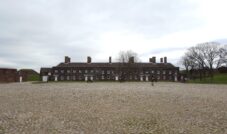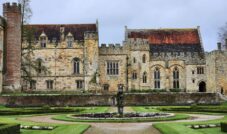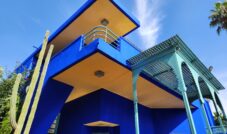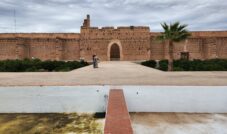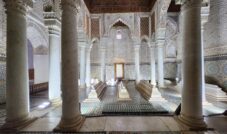I loved my day at St Michael’s mount. It’s such a unique experience (well, in the UK at least, there’s Mont Saint-Michel in France of course) walking along the path which can only be accessed when the tide is out. Don’t worry, there is a boat to take you back on the return journey, unless you want to chance it like these people did!
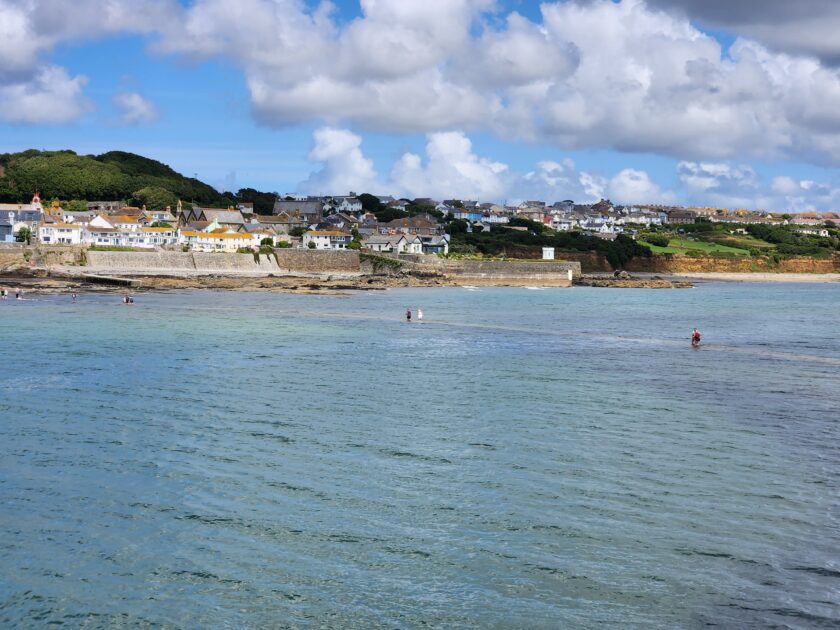
St Michel’s Mount ranks as highly as any of the best castles I’ve visited in Kent too. Just look at those stained glass windows in my gallery below! The tropical garden was also a dream to climb and walk around (you can see it was the perfect weather for it too).
I recommend visiting nearby Penzance, Mousehole and Minack Theatre too.
See my photos from my visit, learn about the history and everything you need to know about visiting.
My Photos of St Michel’s Mount
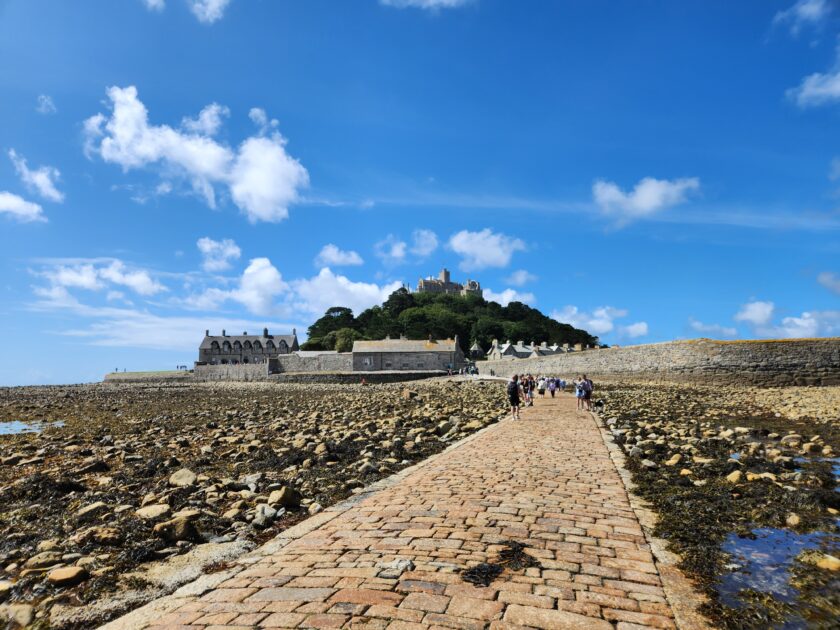
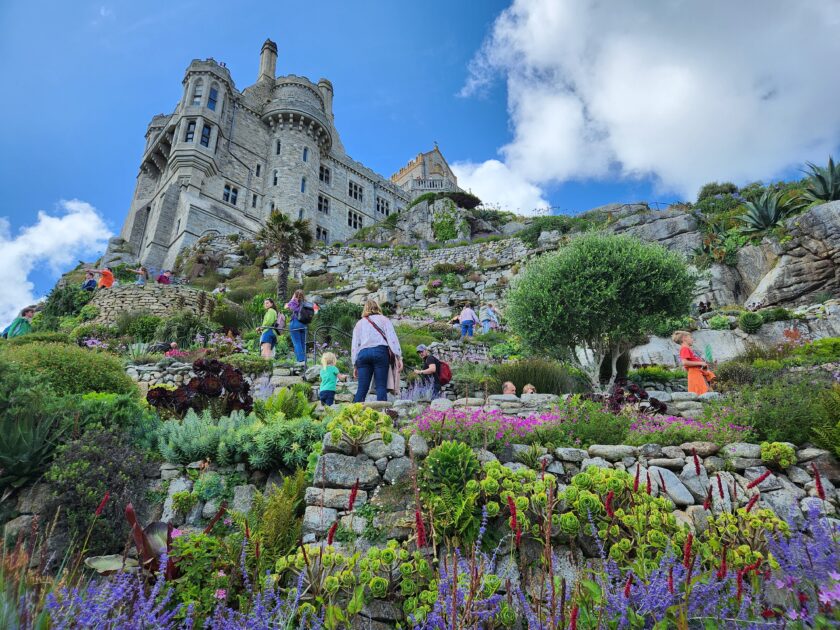
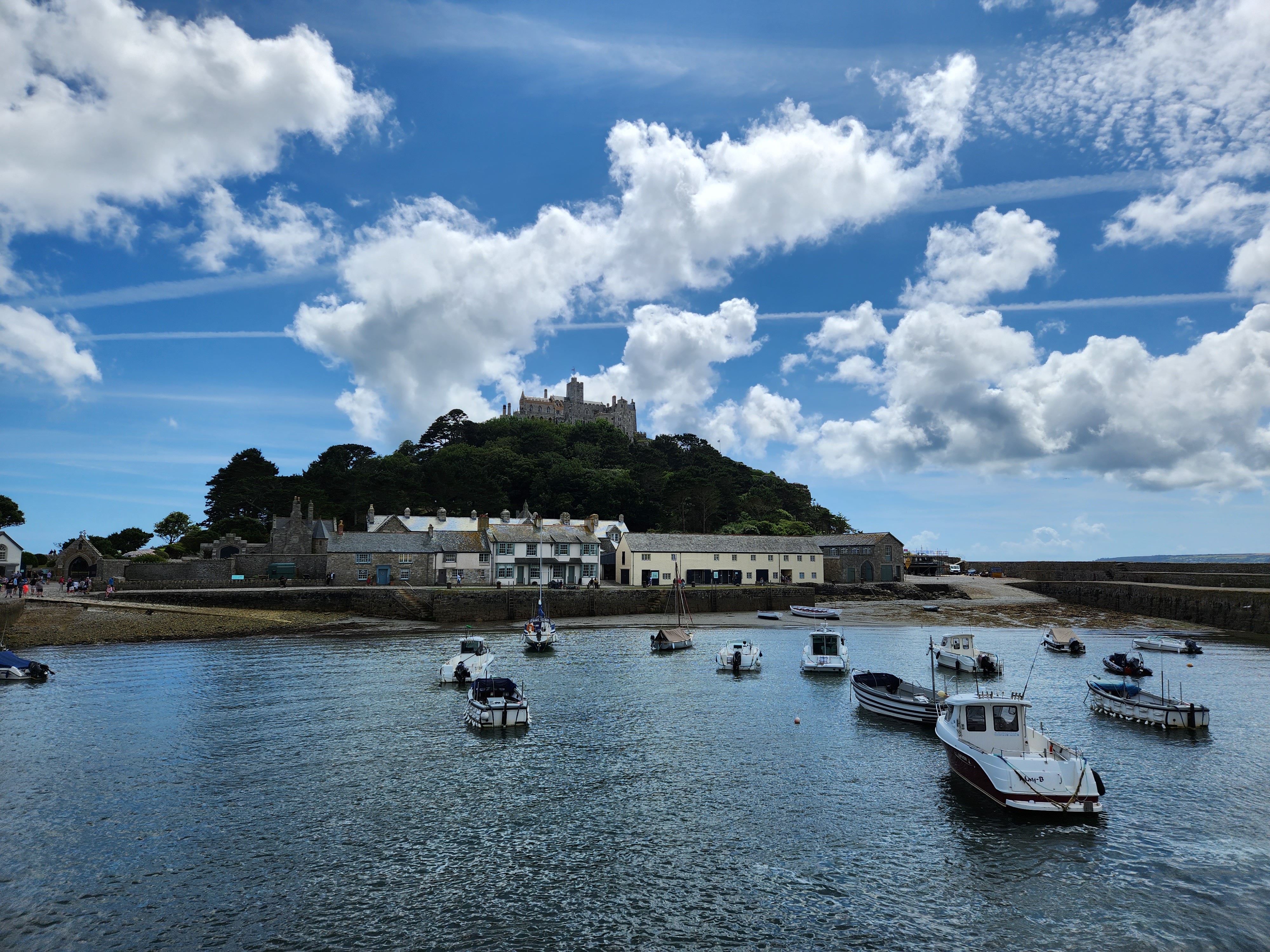
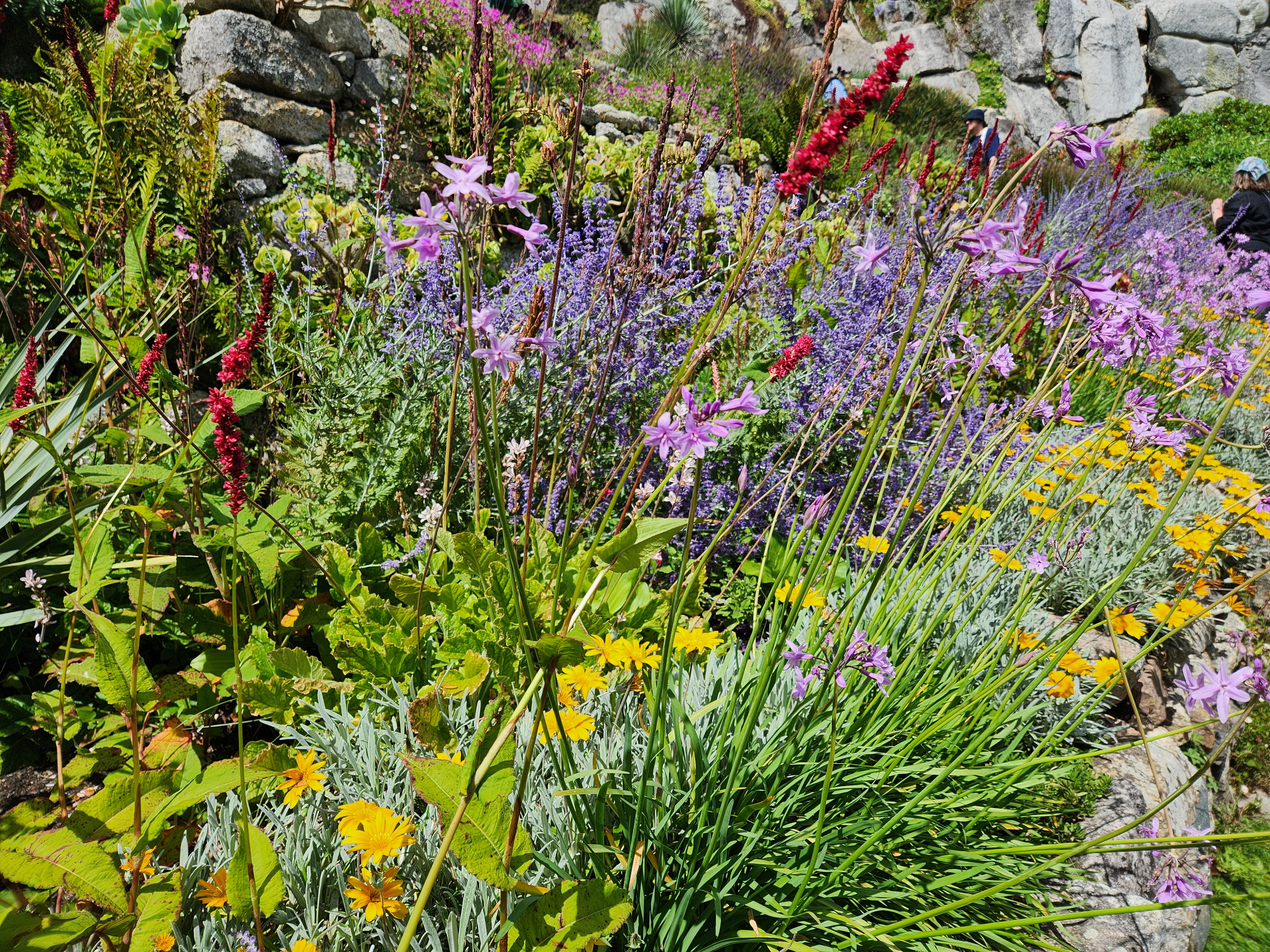
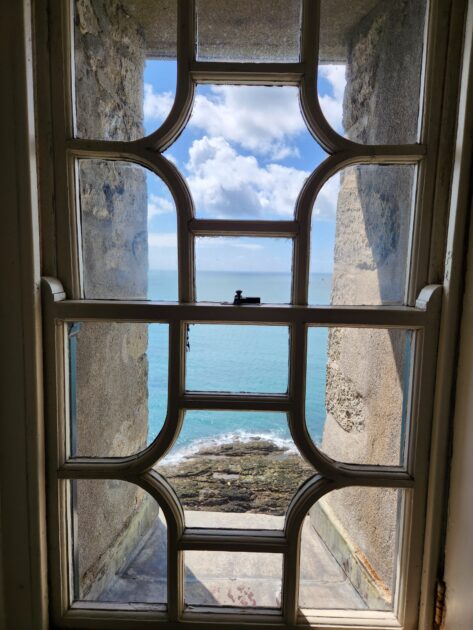
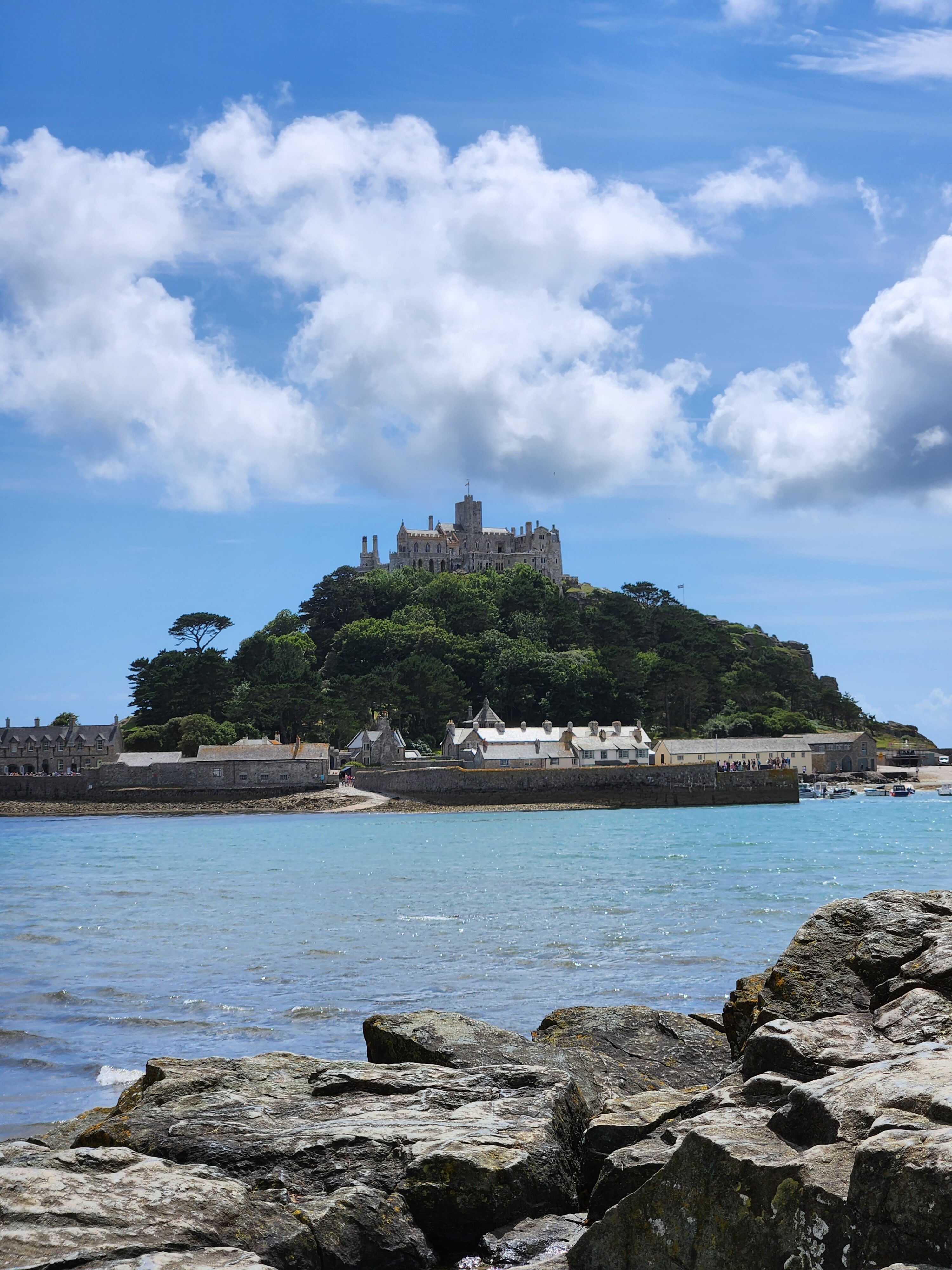
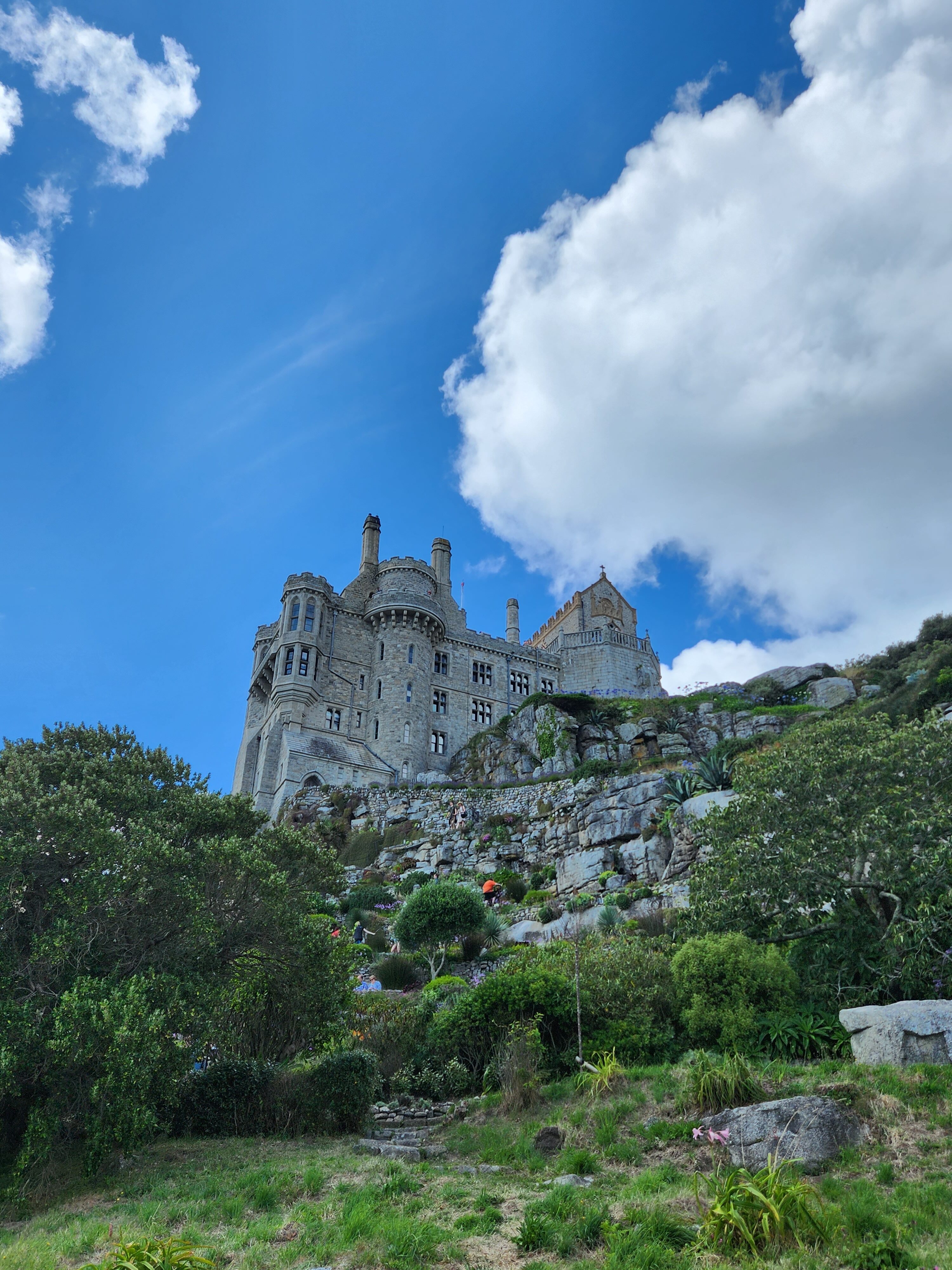
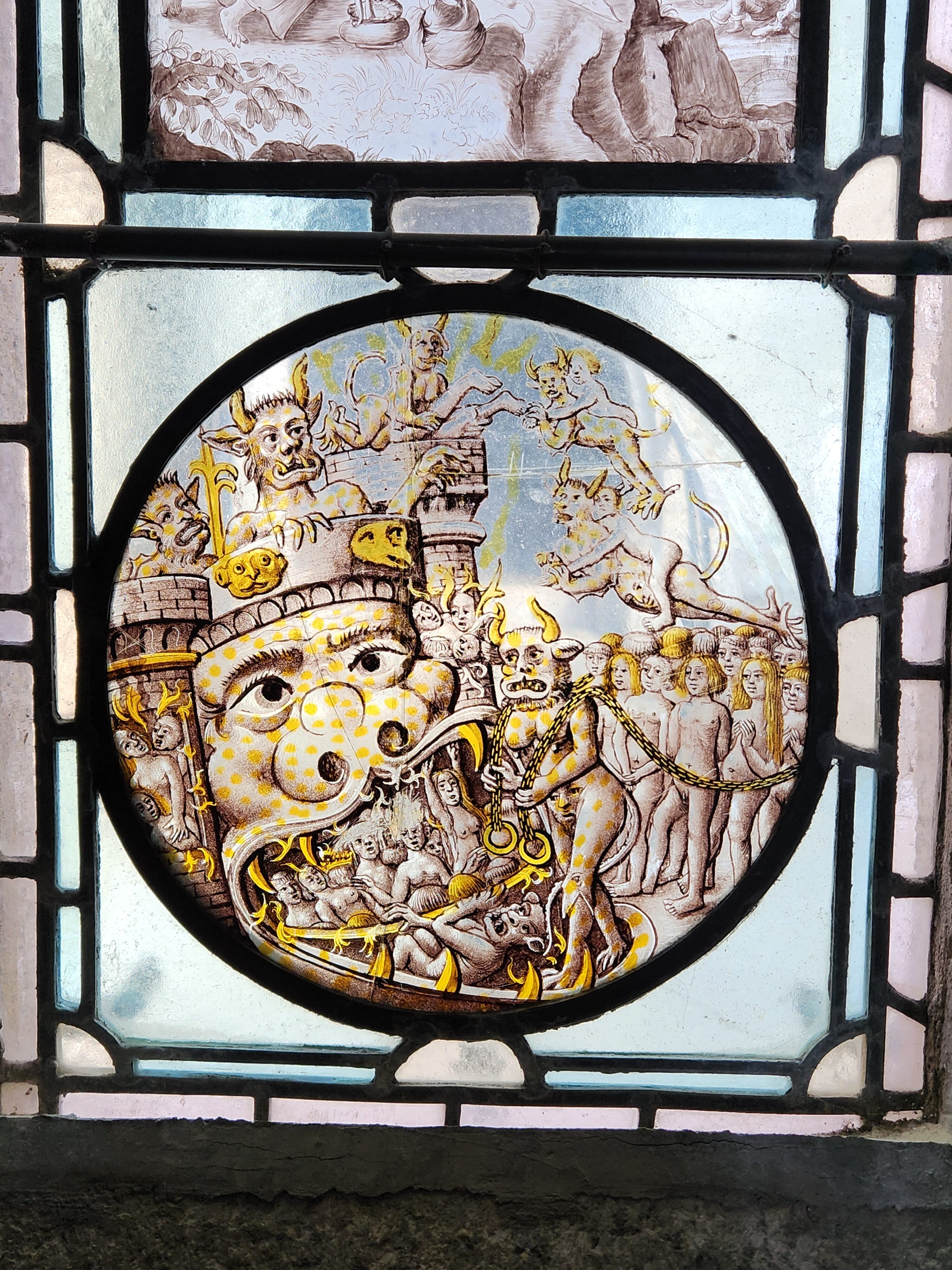
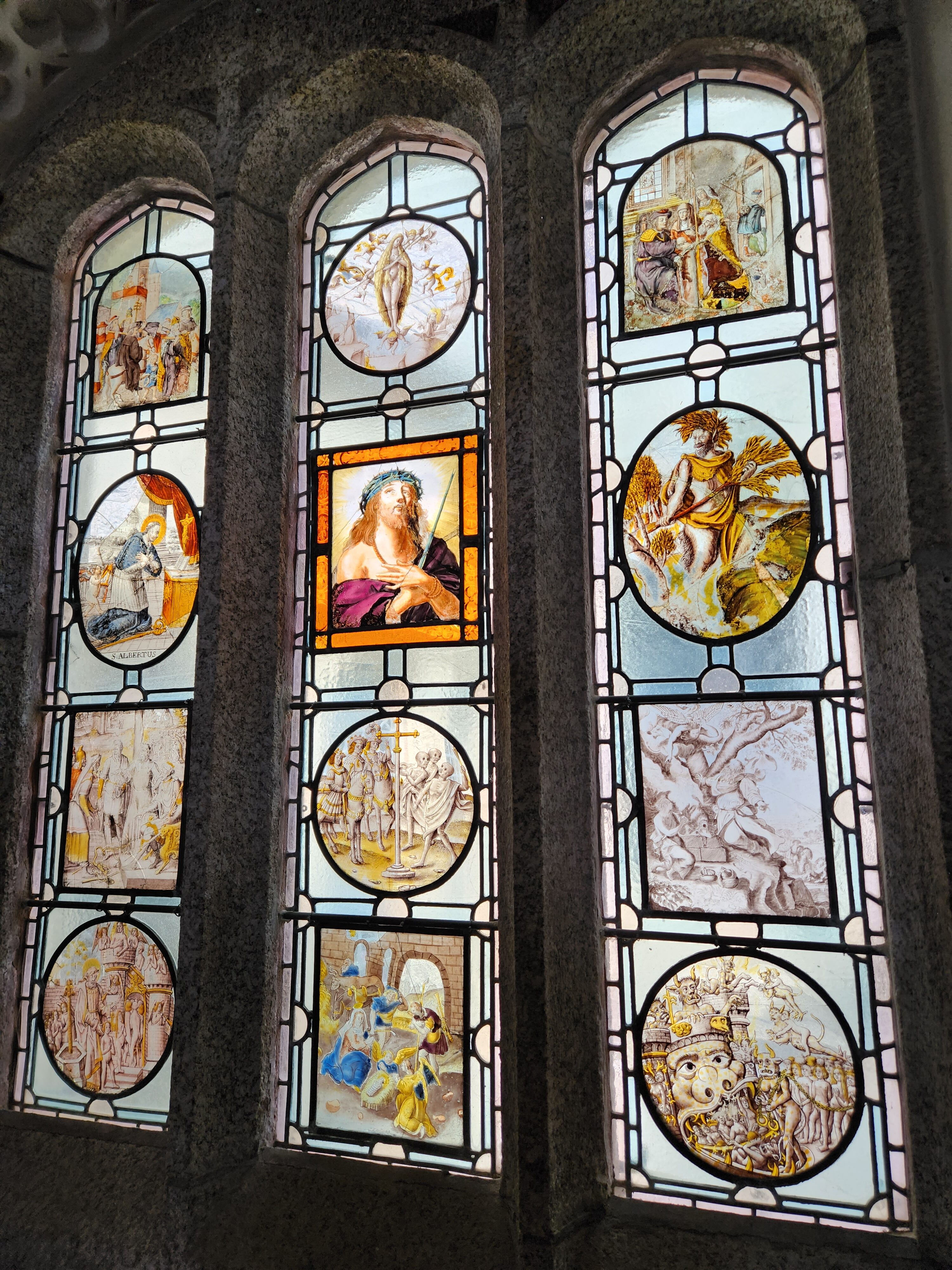
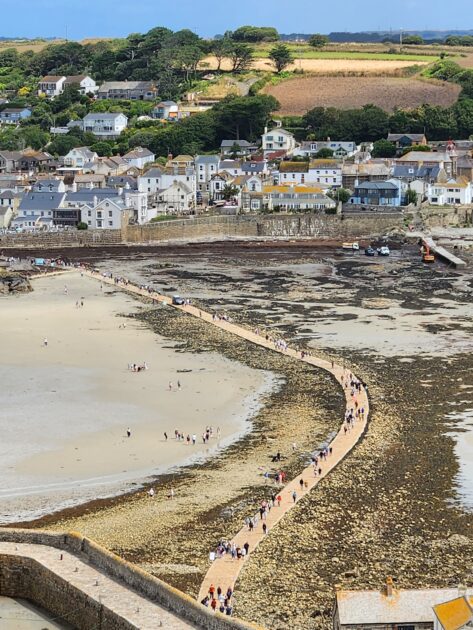
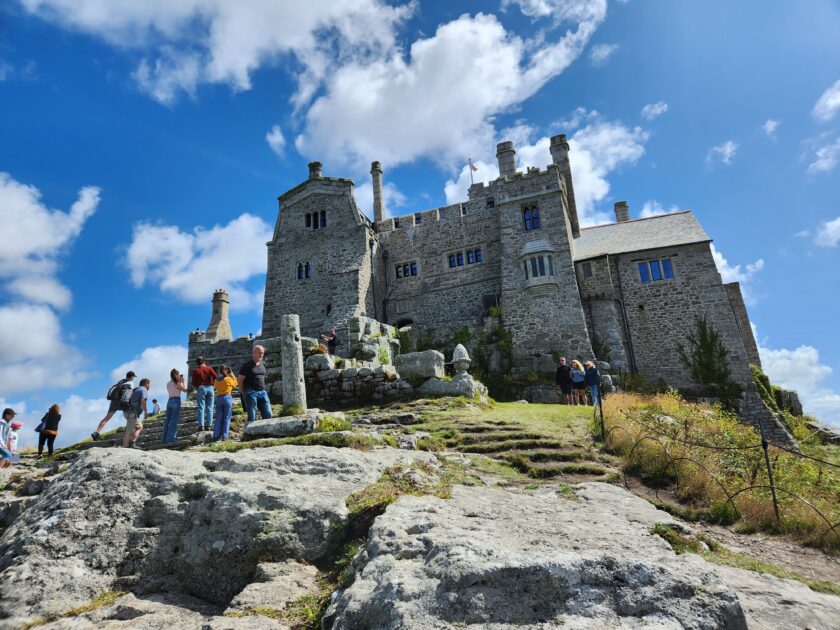
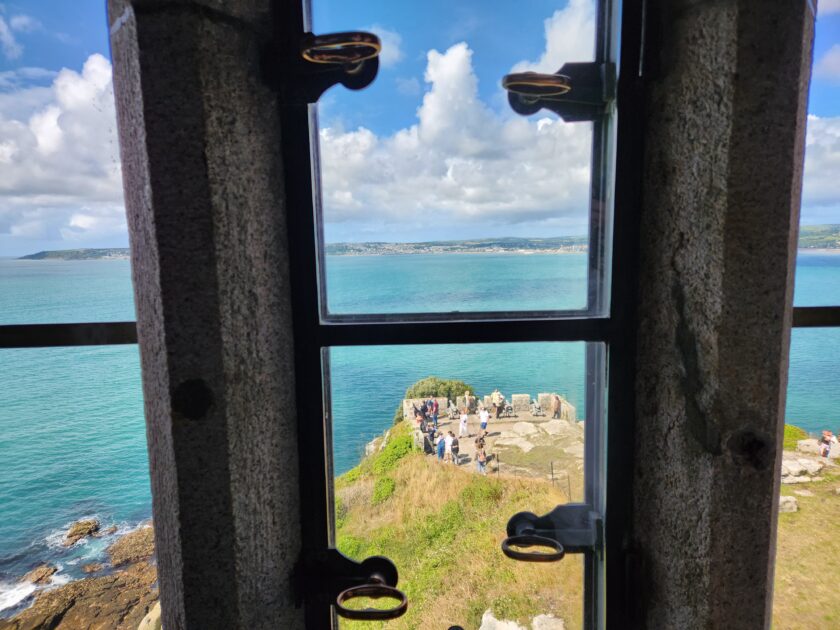
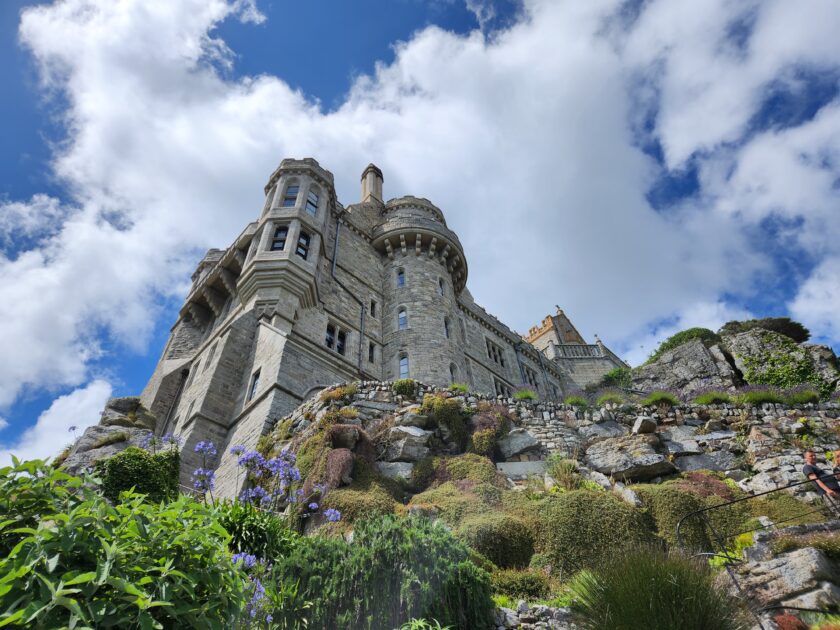
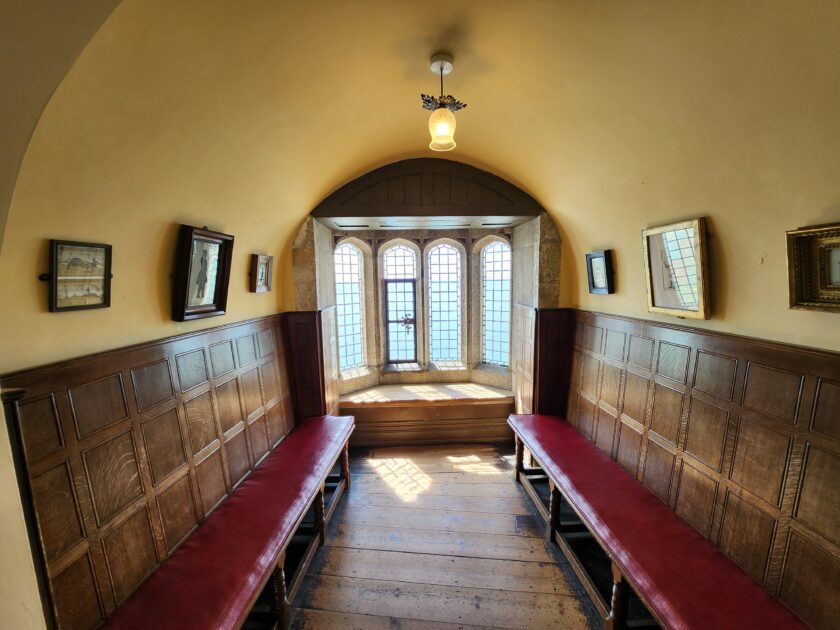
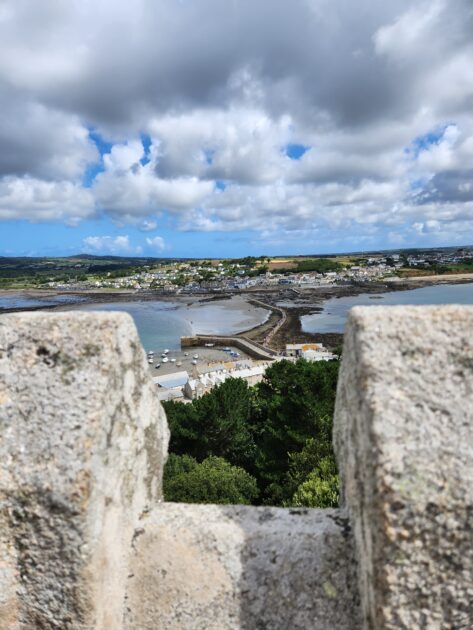
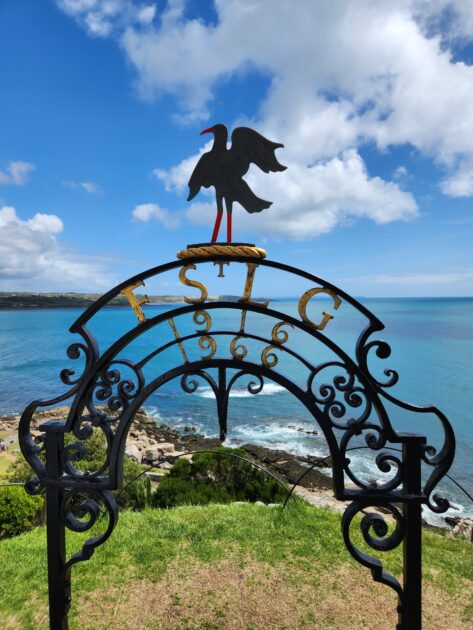
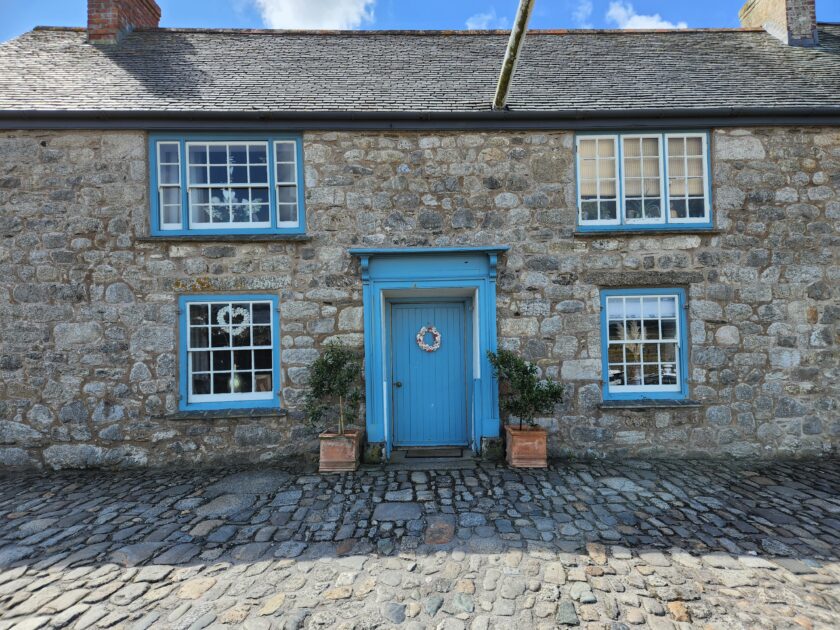
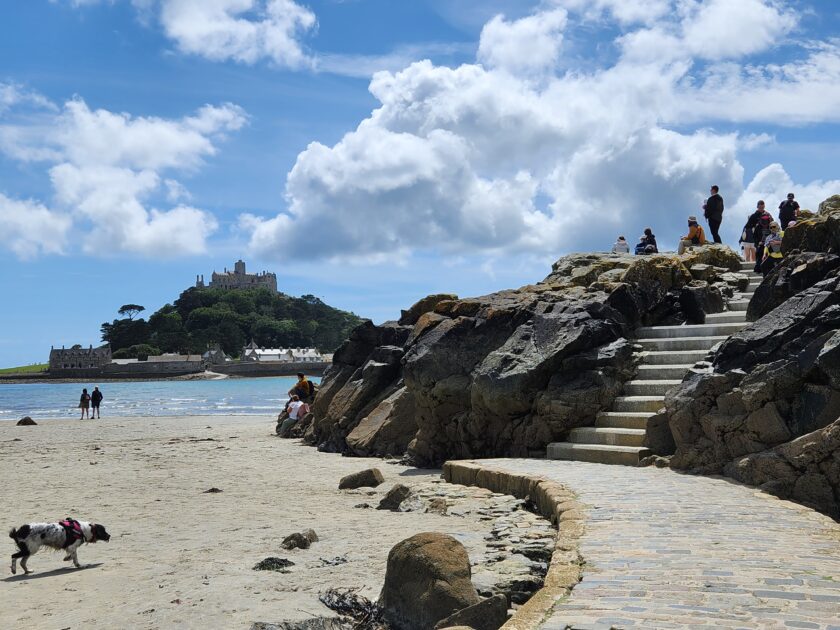
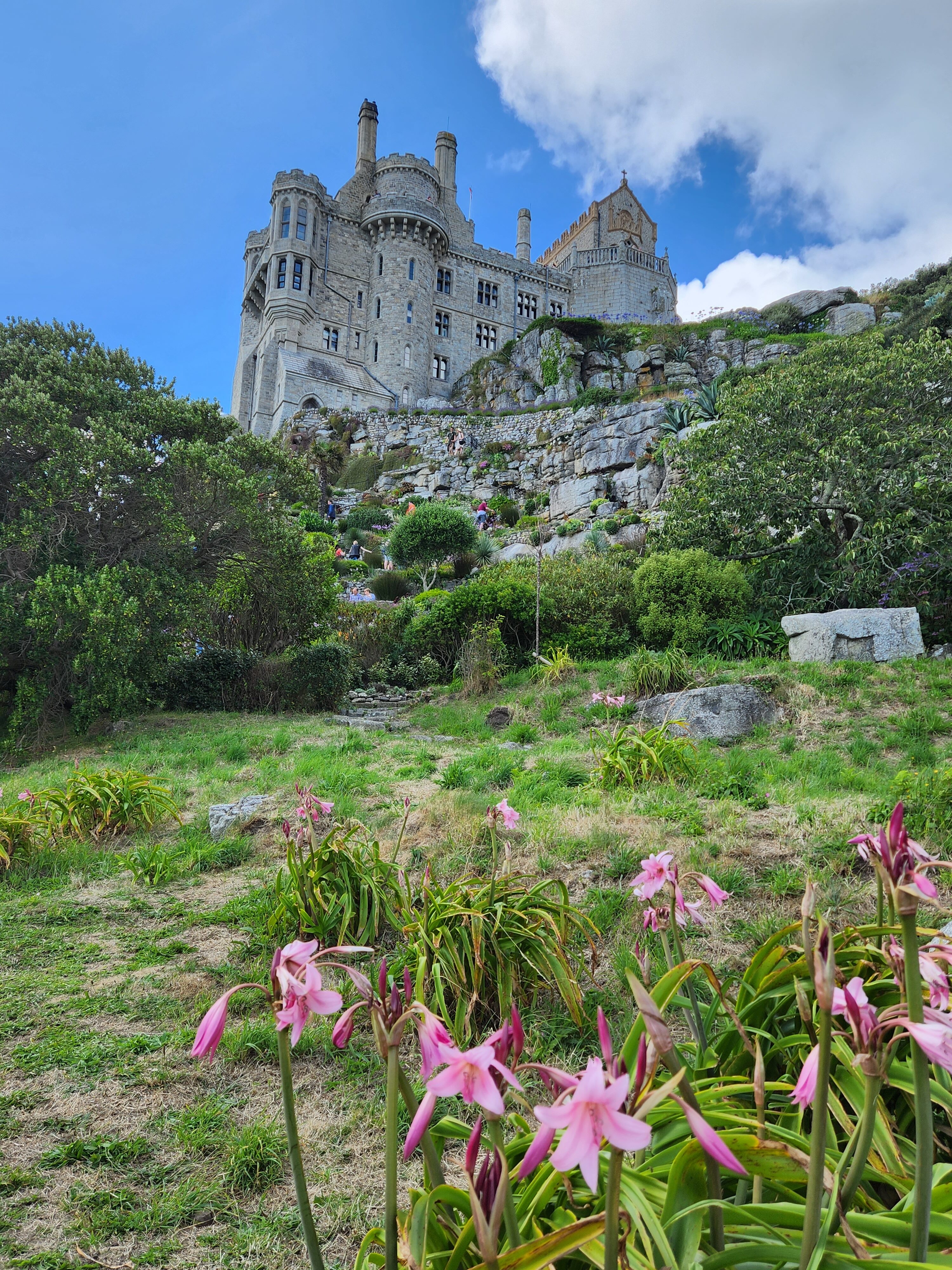
History of St Michael’s Mount
St Michael’s Mount is a tidal island off the coast of Marazion, Cornwall, steeped in legend, pilgrimage, and military history. Its Cornish name, Karrek Loos yn Koos, means “hoar rock in woodland,” hinting at a time before Mount’s Bay was flooded around 1700 BC. Archaeological finds suggest Neolithic and Bronze Age activity, and the island may have been the tin-trading centre known as Ictis, described by Diodorus Siculus in the 1st century BC.
In 495 AD, fishermen claimed to see an apparition of St Michael the Archangel, leading to its religious significance. A Benedictine priory was founded in 1135, linked to Mont-Saint-Michel in Normandy. The Mount saw conflict during the Wars of the Roses, Civil War, and Napoleonic Wars, and was fortified again in WWII with pillboxes still visible today. Since 1659, it has been home to the St Aubyn family, who now co-manage the site with the National Trust.
Interesting Facts About St Michael’s Mount
- The island is one of 43 tidal islands in the UK accessible by foot at low tide. Its unique location in Mount’s Bay makes it one of the most iconic and frequently photographed.
- The causeway is only walkable between mid-tide and low tide — otherwise, access is by boat. The granite-sett path disappears beneath the sea twice daily, adding to the island’s mystique.
- The castle contains a model of the Mount made entirely from champagne corks. It was crafted by a former butler and showcases remarkable attention to detail.
- The Giant’s Heart, a heart-shaped stone in the path, links to the legend of Jack the Giant Killer. According to folklore, it marks the spot where the giant Cormoran fell after being tricked into a pit.
- The subtropical gardens thrive due to the Gulf Stream and are maintained by abseiling gardeners. Their steep terraces require specialist techniques to care for exotic plants like agave and aloe.
- The Spanish Armada was first spotted from the Mount in 1588, triggering a coastal beacon chain. The warning system stretched all the way to London, alerting the nation to the impending threat.
- The Mount was a pilgrimage site, with four miracles reported in 1262–1263. These included recoveries from fever and blindness, drawing pilgrims from across Europe.
- Queen Victoria visited in 1846 — her brass footprint and tea sofa remain on display. She arrived by boat and was carried ashore in a specially prepared chair.
- The Mount was re-fortified in 1940 with pillboxes, now moss-covered and part of the landscape. These defensive structures were built to guard against potential German invasion during WWII.
- The Mount was once known as “Karrek Loos yn Koos,” meaning “the grey rock in a wood,” suggesting it was surrounded by forest before sea levels rose. This name reflects ancient memories of a very different landscape.
- Remnants of ancient trees have been found in nearby Mount’s Bay, supporting the idea that the area was once wooded. Storms occasionally reveal submerged stumps at low tide.
- The island may be the legendary Ictis, a tin trading hub mentioned by ancient Greek historians. Its strategic location and archaeological finds support this theory.
- Neolithic flint tools have been discovered on the island, indicating human activity as far back as 4000 BC. These include arrowheads and blades found in the garden slopes.
- The Mount was gifted to the Benedictine monks of Mont-Saint-Michel by Edward the Confessor in the 11th century. This established a spiritual and architectural link between the two islands.
- It served as a priory until the dissolution of the monasteries under Henry VIII in the 16th century. After that, the site transitioned into a fortified residence.
- The Mount has a French counterpart — Mont-Saint-Michel in Normandy — with which it shares architectural and spiritual ties. Both islands were major pilgrimage destinations and feature similar conical shapes.
- The chapel atop the Mount is dedicated to St Michael and has been a place of worship for centuries. It still holds services and retains medieval features like carved bench ends.
- The legend of the Archangel Michael appearing to fishermen gave the island its name and spiritual significance. He was said to have warned them of danger, guiding them safely to shore.
- The Mount was besieged during the Wars of the Roses in 1473, when John de Vere held it for the Lancastrians. It was one of the last strongholds to fall to the Yorkists.
- During the English Civil War, it was a Royalist stronghold and was captured by Parliamentarian forces in 1646. The siege left visible scars on the castle walls.
- A hermit’s cell beneath the chapel may have housed a solitary monk during its time as a priory. The small stone chamber is tucked into the hillside and remains accessible today.
- The Mount’s granite was quarried for local buildings, including parts of the castle itself. Its distinctive pinkish hue can be seen in structures across Cornwall.
- The sea level around the Mount can vary by up to 5 metres between low and high tide. This dramatic change affects access and reveals hidden features like rock pools and seaweed beds.
- The Mount’s conical shape is the result of ancient volcanic activity and erosion. Its granite core resisted weathering, forming the dramatic peak we see today.
- The island is designated a Site of Special Scientific Interest due to its unique geology. Rare rock formations and coastal habitats make it valuable for research and conservation.
- The castle’s library contains rare manuscripts and books dating back several centuries. These include religious texts, naval charts, and family records.
- The Mount has inspired numerous artists and writers, including Turner and Tennyson. Its silhouette and shifting tides have made it a muse for generations.
- Local folklore speaks of mermaids luring sailors to their doom near the Mount’s rocky shores. These tales blend myth with maritime caution, warning of treacherous currents.
- The Mount’s beacon was part of a national warning system used during times of invasion threat. It was lit during the Napoleonic Wars and stood ready again in WWII.
- The cobbled causeway is made from granite setts and has been in use for centuries. It was laid to withstand tidal forces and remains a vital link to the mainland.
- The Mount’s silhouette has featured in films and television, often as a stand-in for mythical or medieval locations. Its dramatic profile lends itself to fantasy and historical storytelling.
Things to See and Do at St Michael’s Mount
- Walk the Causeway
Cross the ancient granite path at low tide, following in the footsteps of pilgrims and villagers. - Tour the Castle
Explore nine rooms including the Chevy Chase Room, Garrison Room, and chapel. Look out for armour, friezes, and family portraits. - Climb to the Battlements
Enjoy panoramic views of Mount’s Bay, the Lizard Peninsula, and the Cornish coast. - Visit the Subtropical Gardens
Admire exotic plants clinging to granite terraces — best viewed from above. - Spot the Giant’s Heart
Find the heart-shaped stone embedded in the path and learn about the legend of Cormoran. - Explore the Harbour and Village
Discover the historic quayside, cottages, and Steward’s House art gallery. - See the Chapel of St Michael
Visit the 12th-century chapel with its iconic carving of St Michael slaying the dragon. - Join a Guided Tour or Audio Experience
Learn about the Mount’s religious, military, and family history through expert-led tours. - Enjoy Afternoon Tea
Book a table in the island café for Cornish cream tea and locally sourced treats. - Browse the Island Shops
Pick up gifts, books, and artisan crafts in the Mount Shop and Island Shop.
Practical Information for Visiting St Michael’s Mount
- Location: Kings Road, Marazion, Cornwall TR17 0HS
- Opening Times (2025):
- Castle: Sun–Fri, 9:30 am – 5:00 pm
- Gardens: Seasonal; check website for dates
- Causeway access: Mid-tide to low tide only
- Entry Fees:
- Castle: Adults £14.00 / Children £7.00
- Gardens: Adults £9.00 / Children £4.50
- Combined ticket: Adults £20.00 / Children £10.00
- National Trust members: Free
- Recommended Visit Duration: 2–3 hours
(Allow extra time for tide changes or garden access) - Tickets:
- Advance booking required during peak season
- St Michael’s Mount – Official Site
- Accessibility:
- Castle and gardens have steep, cobbled paths
- Accessible toilets available; boat access limited
- Transport:
- Train: Penzance (3 mi)
- Bus: Penzance to Marazion
- Car: A30 to Marazion; park at Folly Field
- Parking:
- Long Stay and Overflow car parks (not NT); charges apply
- Dogs:
- Assistance dogs only on the island
- Food & Drink:
- Island Café, pop-up kiosks, and Afternoon Tea available
- Toilets:
- Accessible and baby-changing facilities on site
- Nearby: Marazion Beach, Marazion Marsh, Penzance, Mousehole, Tremenheere Sculpture Gardens

